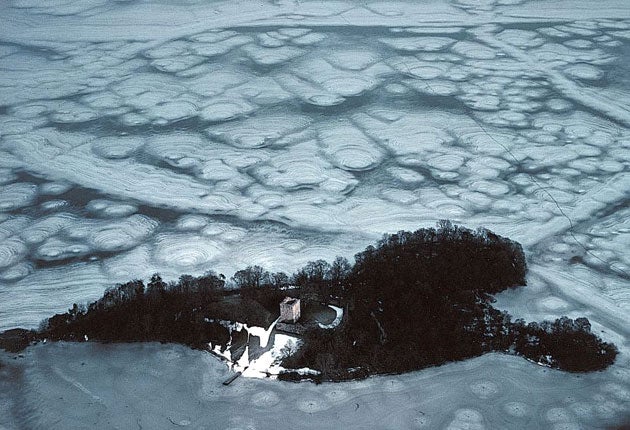25 years of photography: Celebrating the anniversary of the national collection, National Gallery Complex, Edinburgh
Scotland's raw and wild side

Your support helps us to tell the story
From reproductive rights to climate change to Big Tech, The Independent is on the ground when the story is developing. Whether it's investigating the financials of Elon Musk's pro-Trump PAC or producing our latest documentary, 'The A Word', which shines a light on the American women fighting for reproductive rights, we know how important it is to parse out the facts from the messaging.
At such a critical moment in US history, we need reporters on the ground. Your donation allows us to keep sending journalists to speak to both sides of the story.
The Independent is trusted by Americans across the entire political spectrum. And unlike many other quality news outlets, we choose not to lock Americans out of our reporting and analysis with paywalls. We believe quality journalism should be available to everyone, paid for by those who can afford it.
Your support makes all the difference.It took Thomas Annan three years to take 31 photographs inside the city centre slums of Glasgow during the late 1860s. Only rarely did the pale Scottish sun provide the light he needed for his large plate camera. Conditions may have been appalling but Annan very subtly tells us that the people were not.
In Close No 101, High Street, Glasgow, a pair of trousers hangs from a washing line strapped across the street. They are tatty – there's a hole in the leg – but they are clean. It was difficult to get water in the slums yet the people are able to uphold the Victorian ideal that cleanliness is next to godliness.
The ghostly face of a young boy – his face blurred by the long exposure – peeps out from a shabby doorway. Child mortality was high, and he is a reminder of all the dead children, but there is hope for him: the street leads down towards an opening filled with light. It is an exit; there is a way out.
The photograph belongs to the Scottish National Galleries, which is celebrating the 25th anniversary of its photography collection.
Scottish photographers were there from the beginning. The earliest work in this exhibition is from around 1845 and it shows The Misses Farnie with Brownie by David Octavius Hill and Robert Adamson. Two children and a puppy were not the ideal subject for these early photographers where the necessary exposure time could be three minutes. Adamson and Hill found a way to limit the exposure time but no one knows how they did it.
Iain Stewart is a contemporary Scottish photographer and his photograph Erriboll is the most recent addition to the museum's collection. It was taken at Loch Erriboll. It's a romantic landscape: raw and wild. Stewart photographed the scene during the day but the water is black and so is the sky. The landscape almost becomes abstract, an arrangement of darkness and light. It is from a series called Dark Eden and the title fits perfectly.
Stewart's interpretation of the Scottish hills is emotional, whereas Patricia Macdonald has a more scientific eye. Her photograph Castle Island and Cracking Ice, Loch Leven (1987) is an aerial shot of the castle where Mary Queen of Scots was imprisoned in 1567. Ice patterns like these are usually found only in polar regions – but 1987 was a particularly cold winter in Scotland. The photograph is a fascinating study of the movement of melting ice and the location is poignant. As Macdonald points out, poor Mary was a woman trapped in the cold politics of the time.
There are eccentric scenes from Scotland's past. The Rev D T K Drummond was a rebellious minister of the Episcopal church in Edinburgh during the 19th century. His photograph Mr Currie is of an outing to study botany in the Scottish hills. Mr Currie is in a wheelchair. It's a wonderful image of the extent of Scottish gentility and the Victorian pursuit of knowledge.
Robin Gillanders worked with Scotland's most famous artist and poet, Ian Hamilton Finlay, during the 1990s. The photograph is of a sculpture on which words have been carved in the style of an epitaph. It reads "The rowan is learning to write". It was taken at the moment when the leaves of the tree cast shadows on the base of the stone and the silhouettes are shaped like the wings of a bird. Shadows on stone become the essence of photography as painting with light.
To 19 April (0131-624 6200)
Join our commenting forum
Join thought-provoking conversations, follow other Independent readers and see their replies
Comments